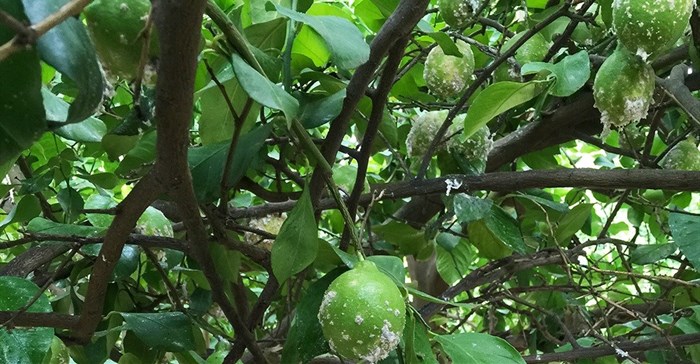
Subscribe & Follow
Jobs
- Homeless Service Centre Kitchen Manager Cape Town
Mealybug can destroy your citrus crop

In South Africa, producers plant quite a lot of citrus every year and this contributes to a monoculture system that creates a more favourable habitat for the pest. We have also been experiencing warmer winters in the northern regions, which led to more mealybugs surviving the winter months. The chemicals then used to combat other pests such as thrips, are detrimental to mealybug predators and parasites.
Small bug, major damage
The damage caused by mealybugs is closely associated with the time and degree of infestation. Mealybugs can cause lumps or dents on fruit or they can deform the fruit. Mealybugs excrete a type of honeydew that can lead to a sooty mold growth on the fruit and attract or exacerbate other pests.
These symptoms can render fruit entirely non-marketable, while severe infestations can lead to fruit drop and yield loss. The honeydew excretion of the mealybug also attracts other pests such as the carob moth. The larvae can penetrate the fruit’s peel and lead to fruit drop.
The honeydew excretions can lead to a build-up of ant populations in citrus orchards, which is detrimental to the biological control of other pests. Ants support the spread of mealybugs and protect the bugs against predators and parasites in order to obtain honeydew. Mealybugs can exacerbate the occurrence of diseases such as Alternaria core rot, thus reducing quality and yield. Leaf deformation is common. It offers shelter to a number of pests and leads to decreased photosynthesis.
Controlling mealybugs
Control strategies must be based on proper monitoring and should start in winter or during the pre-season. Open trees up by way of sufficient pruning to make conditions less favourable for the pest and to allow for sufficient spray penetration in the coming season. This is also a good time to remove all old dead wood and “out of season” fruit in which mealybugs tend to overwinter.
In may be necessary to control severe infestations of mealybugs chemically, after harvesting time and preferably after pruning.
In most cases, mealybug is a rebound pest due to monoculture and practices in an over-simplified agricultural ecosystem. As a result, it is necessary to develop strategies that are conducive to biological control, as mealybugs are hard to control using chemicals only.
Choose chemical programmes in a way that will have the least impact on predator insects and pest parasites. This practice will reduce the need for chemicals and offer greater opportunity for the release of more insect parasites or predator insects.
Ant control should start early to prevent the initial build-up of mealybug populations.
Consider registered chemicals based on the following aspects:
• Mealybug species and level of infestation
• Residual risk and target market
• Integrability with biological control
• Timing requirements
• Chemical compatibility and application requirements
View Grootplaas on kykNET DSTV channel 144 on 15 November when Gys Helm of Laeveld Agrochem will talk about mealybug infestation.
Source: AgriOrbit

AgriOrbit is a product of Centurion-based agricultural magazine publisher Plaas Media. Plaas Media is an independent agricultural media house. It is the only South African agricultural media house to offer a true 360-degree media offering to role-players in agriculture. Its entire portfolio is based on sound content of a scientific and semi-scientific nature.
Go to: http://agriorbit.com/






















































































